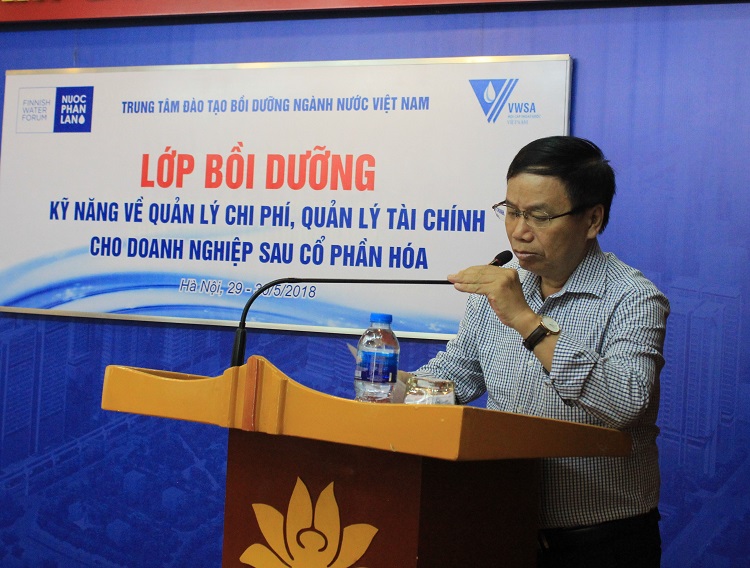Due to rapid industrialization and urbanization in Vietnam, the demand for water supply and pollution treatment in urban and rural areas has become indispensable. Most of the cities and districts are equipped with water supply facilities and sanitation construction (i.e. sewerage and wastewater treatment, waste collection and disposal). However, water supply and sanitation construction in small towns has been an urgent issue to the development and improvement of the lives of the urban population. In spite of this, investment has been limited.
Due to the differences in natural conditions, socio-economic and environmental characteristics in urban areas, water supply and sanitation systems in small towns contain small capacities compared with large scale water collection and distribution in complex terrain conditions. Therefore, it is hard to meet economic criteria, investment interest and high operational management costs. Besides, incomes in these small town are low and insufficient. It negatively affects investment decisions on small scale water supply and sanitation, not only during construction but also in the operational management process.
Up to now, many small and medium-scale water supply and sanitation facilities have been constructed by a variety of funds (i.e. from government, domestic and foreign donors). They have served a large number of citizens. However, many of them have been deteriorated rapidly; the water quality does not meet standards, and the service is poor. It is a big concern to overcome these issues.
The Water and Sanitation Program for Small Towns (WSPST) in Vietnam is a joint effort of the governments of Vietnam and Finland to support the development of water supply and sanitation and meet the demands of urban population growth as well as economic activities of the program sites. WSPST is one of the first major efforts to systematically improve the water and sanitation sector conditions in small towns. WSPST focuses on the urban areas of type V; however, in some cases, the service area of proposed projects are not located in the town but in nearby rural areas.
The purpose of the program (WSPST) is to improve water supply and wastewater treatment service in the project&;s sites, and meet 100% of the demand and national quality standards on the decrease of water loss, financial capacity and environmental sustainability.
WSPST is implemented under grant aid of the Government of Finland and Vietnamese government&;s capital. The Government of Vietnam will provide loans to construct water supply facilities in towns. The total investment is 35.8 million USD, of which 60-80% comes from Finland and 20-40% comes fromVietnam, divided into stages.
The program is being carried out from August 2004 to December 2016. The Finnish Ministry of Foreign Affairs, represented by the Embassy of Finland in Vietnam, and the Vietnamese Ministry of Construction are responsible for the program.
Scope of the program: covering eight (8) provinces/cities: Hai Phong, Hung Yen and Thai Binh in the Red River Delta region; Bac Kan, Cao Bang, Ha Giang, Tuyen Quang and Yen Bai in the North of Hanoi, the program was implemented in 03 stages; Stage 1 from January to August 2004; Stage 2 from September to November 2013; Stage 3 from January 2014 to the end of 2016. The technicial consultants in stage 3 are ECONET (Finland) & HALCOM (Vietnam). The main goal of this stage is to ensure the stability of operation, guidance, maintenance of the works/equipment and service quality improvement.
1. Results of the Water and Sanitation Programme for Small Towns in Vietnam (WSPST)
The program has achieved significant success. 25 towns in 8 provinces with 41 works of water supply, drainage and wastewater treatment have been completed, in which there are 22 water supply facilities (capacity from 300 to 6,000 m³/day); water supply pipelines connected to 27,026 households; and 19 drainage/wastewater treatment facilities (capacity from 250 to 3,200 m³/day). The program has connected 17,380 households to the wastewater treatment plant (approximately 69520 beneficiaries). Water supply quality lives up to the standards of QCVN 01:2009/BYT. The current sewerage system and wastewater treatment gradually meet hygiene demands according to column B in QCVN 14:2008/BTNMT. The water supply andsewerage system of the program has effectively and safelybeen operating and achieved the project's objectives.
2. Basic elements contributing to the success of WSPST program
Thank to the achievements of Water Supply Projects in Vietnam and lessons learnt of small scale projects, the project has successfully achieved its objectives.
The followings factors have contributed to the success of the program:
- WSPST&;s approach is based on efficiency management, demand orientation, sustainability and responsiveness of the project. A community participatory method in the preparation, implementation and evaluation stages has ensured meeting the beneficiaries&; needs.
- At the beginning, customer researches have been studied, including consumer consultations and interviews. This helps draw out models of water use and hygiene, expectations of customers about services, available connection, willingness of payment and knowledge about health, attitudes and habits. The cooperation with mass organizations, particularly the Women's Union, was also established.
- The program has received support from the Ministry of Construction, the Embassy of Finland in Vietnam, Provincial People&;s Committees, and the project management board.
- The program recruited a group of long-term international and domestic technical experts. This group cooperated well to meet the requirements in each stage.
- During the design and construction process, Vietnamese regulations and standards were strictly followed. M&E and Technical consultants closely monitored the sites to provide timely solutions.
- The program was implemented in three stages. Each of the later stages learned from the previous stages.
- In the water supply projects, water resources and water treatment were studied to be applied in each town, in accordance with its economic conditions and its operating capacity. Water treatment were mostly based on traditional methods.The basic water treatment method is followed: A. Coagulation + flocculation - Sedimentation - Filter - Disinfection. Chemicalsused were mainly aluminum, PAC, disinfected by liquid chlorine. These chemicals are widely used in Vietnam. In some cases, preliminary sedimentation tanks were constructedto sediment and reduce chemical costs. This method has been applied in the works in Na Ry, Na Phac, Bang Lung (Bac Kan), Phung Hung (Hung Yen), An Lao (Hai Phong).
- Terrain-based water distribution has been utilized. Inverters have also been invested in the water supply pump stations. Therefore, operating andmanagement cost have dramatically reduced.
- The project built tanks to collect wastewater (sludge tank) to limit the influence of sludge in the water treatment process.
To meet the demand for water quality control, basic laboratory equipment for each water supply station was procured. Capacity training was carried out.
- Needs of capacity, sewerage solution and wastewater treatmentfor individual towns were researched, analyzed and selected. Thelocations of wastewater treatment systems were in accordance with the general plan; the construction areas were sufficient for demand. Wastewater treatment was selected in accordance with natural conditions and the socio-economic development of each region; Wastewater treatment technology processes were applied in two forms: i) natural biological lakes. ii) BASTAF & wetland. These processes have been studied and applied in Vietnam. Theyare convenient and reasonable in management, operation, and investment costs, and environmentally friendly.
-Water Safety Plan (WSP) was taught to managers and operation engineers to ensure water security and service quality. Following this plan, water supply enterprises play key roles in economical water use and environmental protection, proactively preventing pollution and seeking for solutions for a sustainable development.
The investment and management models as well as the operation of the water supply and drainage systems in the program were suitably applied. Trainings and guidelines for management and operation were seriously taken into consideration, and communication and community raising awareness were closely collaborated on. Therefore, it brought in significant results.
- Management model of the water supply and drainage systems in WSPST.
+ Most water supply systems are applied management models that establish enterprises/or affiliates under the provincial water supply company to operate the system. Only two exceptions happened in Tien Lang and An Lao (Hai Phong province). The management model is to establish a joint stock company in each province, particularly one in Tien Lang under District People's Committee and An Lao water supply Company in An Lao province.
+ A common management model is: Provincial/city People&;s Committee makes decisions and assigns a relevant department to manage and operate.
3. Conclusion
The program has proved an effective model at the small and medium scales. The program is carried out in accordance to policies and development strategies of urban water supply and sewerage system in Vietnam, identified in the Decision No. 1929/QD-TTg and No. 1930/QD-TTg on 20th Nov, 2009, by the Prime Minister. The systems have been gradually completed and put into practice. By doing so, they will stably supply water for 22 towns and basically solve the issue of environmental pollution caused by wastewater in 19 towns of 8 provinces in the project areas. The factors mentioned above have brought in significant results and meaningful investment of the program.
In fact, in Vietnam, many urban and rural areas are still in need of clean water and pollution solutions. Demands of investment of small and medium-scale water supply and drainage systems in each area are increasing, and therefore, this model should be widely replicated.
Nguyen Van Hong - DEVIWAS Project
Due to the differences in natural conditions, socio-economic and environmental characteristics in urban areas, water supply and sanitation systems in small towns contain small capacities compared with large scale water collection and distribution in complex terrain conditions. Therefore, it is hard to meet economic criteria, investment interest and high operational management costs. Besides, incomes in these small town are low and insufficient. It negatively affects investment decisions on small scale water supply and sanitation, not only during construction but also in the operational management process.
Up to now, many small and medium-scale water supply and sanitation facilities have been constructed by a variety of funds (i.e. from government, domestic and foreign donors). They have served a large number of citizens. However, many of them have been deteriorated rapidly; the water quality does not meet standards, and the service is poor. It is a big concern to overcome these issues.
The Water and Sanitation Program for Small Towns (WSPST) in Vietnam is a joint effort of the governments of Vietnam and Finland to support the development of water supply and sanitation and meet the demands of urban population growth as well as economic activities of the program sites. WSPST is one of the first major efforts to systematically improve the water and sanitation sector conditions in small towns. WSPST focuses on the urban areas of type V; however, in some cases, the service area of proposed projects are not located in the town but in nearby rural areas.
The purpose of the program (WSPST) is to improve water supply and wastewater treatment service in the project&;s sites, and meet 100% of the demand and national quality standards on the decrease of water loss, financial capacity and environmental sustainability.
WSPST is implemented under grant aid of the Government of Finland and Vietnamese government&;s capital. The Government of Vietnam will provide loans to construct water supply facilities in towns. The total investment is 35.8 million USD, of which 60-80% comes from Finland and 20-40% comes fromVietnam, divided into stages.
The program is being carried out from August 2004 to December 2016. The Finnish Ministry of Foreign Affairs, represented by the Embassy of Finland in Vietnam, and the Vietnamese Ministry of Construction are responsible for the program.
Scope of the program: covering eight (8) provinces/cities: Hai Phong, Hung Yen and Thai Binh in the Red River Delta region; Bac Kan, Cao Bang, Ha Giang, Tuyen Quang and Yen Bai in the North of Hanoi, the program was implemented in 03 stages; Stage 1 from January to August 2004; Stage 2 from September to November 2013; Stage 3 from January 2014 to the end of 2016. The technicial consultants in stage 3 are ECONET (Finland) & HALCOM (Vietnam). The main goal of this stage is to ensure the stability of operation, guidance, maintenance of the works/equipment and service quality improvement.
1. Results of the Water and Sanitation Programme for Small Towns in Vietnam (WSPST)
The program has achieved significant success. 25 towns in 8 provinces with 41 works of water supply, drainage and wastewater treatment have been completed, in which there are 22 water supply facilities (capacity from 300 to 6,000 m³/day); water supply pipelines connected to 27,026 households; and 19 drainage/wastewater treatment facilities (capacity from 250 to 3,200 m³/day). The program has connected 17,380 households to the wastewater treatment plant (approximately 69520 beneficiaries). Water supply quality lives up to the standards of QCVN 01:2009/BYT. The current sewerage system and wastewater treatment gradually meet hygiene demands according to column B in QCVN 14:2008/BTNMT. The water supply andsewerage system of the program has effectively and safelybeen operating and achieved the project's objectives.
2. Basic elements contributing to the success of WSPST program
Thank to the achievements of Water Supply Projects in Vietnam and lessons learnt of small scale projects, the project has successfully achieved its objectives.
The followings factors have contributed to the success of the program:
- WSPST&;s approach is based on efficiency management, demand orientation, sustainability and responsiveness of the project. A community participatory method in the preparation, implementation and evaluation stages has ensured meeting the beneficiaries&; needs.
- At the beginning, customer researches have been studied, including consumer consultations and interviews. This helps draw out models of water use and hygiene, expectations of customers about services, available connection, willingness of payment and knowledge about health, attitudes and habits. The cooperation with mass organizations, particularly the Women's Union, was also established.
- The program has received support from the Ministry of Construction, the Embassy of Finland in Vietnam, Provincial People&;s Committees, and the project management board.
- The program recruited a group of long-term international and domestic technical experts. This group cooperated well to meet the requirements in each stage.
- During the design and construction process, Vietnamese regulations and standards were strictly followed. M&E and Technical consultants closely monitored the sites to provide timely solutions.
- The program was implemented in three stages. Each of the later stages learned from the previous stages.
- In the water supply projects, water resources and water treatment were studied to be applied in each town, in accordance with its economic conditions and its operating capacity. Water treatment were mostly based on traditional methods.The basic water treatment method is followed: A. Coagulation + flocculation - Sedimentation - Filter - Disinfection. Chemicalsused were mainly aluminum, PAC, disinfected by liquid chlorine. These chemicals are widely used in Vietnam. In some cases, preliminary sedimentation tanks were constructedto sediment and reduce chemical costs. This method has been applied in the works in Na Ry, Na Phac, Bang Lung (Bac Kan), Phung Hung (Hung Yen), An Lao (Hai Phong).
- Terrain-based water distribution has been utilized. Inverters have also been invested in the water supply pump stations. Therefore, operating andmanagement cost have dramatically reduced.
- The project built tanks to collect wastewater (sludge tank) to limit the influence of sludge in the water treatment process.
To meet the demand for water quality control, basic laboratory equipment for each water supply station was procured. Capacity training was carried out.
- Needs of capacity, sewerage solution and wastewater treatmentfor individual towns were researched, analyzed and selected. Thelocations of wastewater treatment systems were in accordance with the general plan; the construction areas were sufficient for demand. Wastewater treatment was selected in accordance with natural conditions and the socio-economic development of each region; Wastewater treatment technology processes were applied in two forms: i) natural biological lakes. ii) BASTAF & wetland. These processes have been studied and applied in Vietnam. Theyare convenient and reasonable in management, operation, and investment costs, and environmentally friendly.
-Water Safety Plan (WSP) was taught to managers and operation engineers to ensure water security and service quality. Following this plan, water supply enterprises play key roles in economical water use and environmental protection, proactively preventing pollution and seeking for solutions for a sustainable development.
The investment and management models as well as the operation of the water supply and drainage systems in the program were suitably applied. Trainings and guidelines for management and operation were seriously taken into consideration, and communication and community raising awareness were closely collaborated on. Therefore, it brought in significant results.
- Management model of the water supply and drainage systems in WSPST.
+ Most water supply systems are applied management models that establish enterprises/or affiliates under the provincial water supply company to operate the system. Only two exceptions happened in Tien Lang and An Lao (Hai Phong province). The management model is to establish a joint stock company in each province, particularly one in Tien Lang under District People's Committee and An Lao water supply Company in An Lao province.
+ A common management model is: Provincial/city People&;s Committee makes decisions and assigns a relevant department to manage and operate.
3. Conclusion
The program has proved an effective model at the small and medium scales. The program is carried out in accordance to policies and development strategies of urban water supply and sewerage system in Vietnam, identified in the Decision No. 1929/QD-TTg and No. 1930/QD-TTg on 20th Nov, 2009, by the Prime Minister. The systems have been gradually completed and put into practice. By doing so, they will stably supply water for 22 towns and basically solve the issue of environmental pollution caused by wastewater in 19 towns of 8 provinces in the project areas. The factors mentioned above have brought in significant results and meaningful investment of the program.
In fact, in Vietnam, many urban and rural areas are still in need of clean water and pollution solutions. Demands of investment of small and medium-scale water supply and drainage systems in each area are increasing, and therefore, this model should be widely replicated.
Nguyen Van Hong - DEVIWAS Project

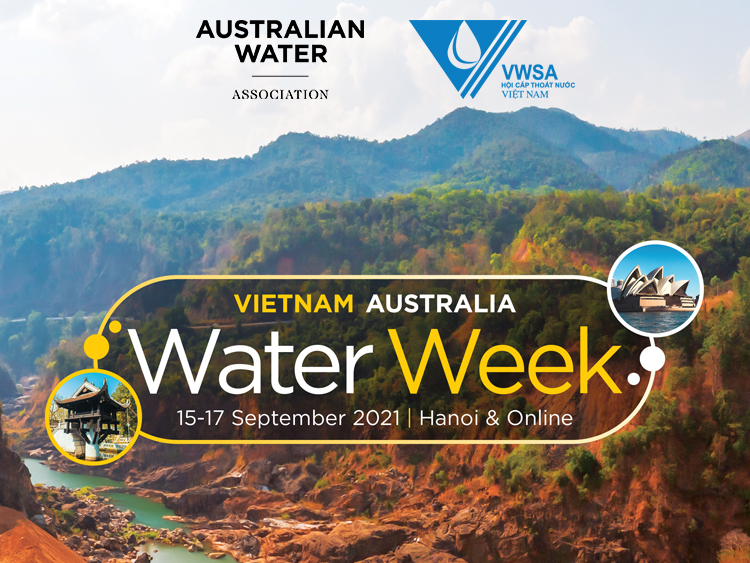
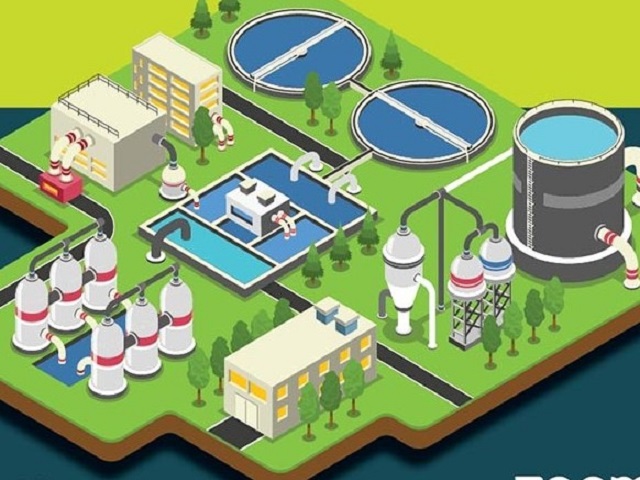
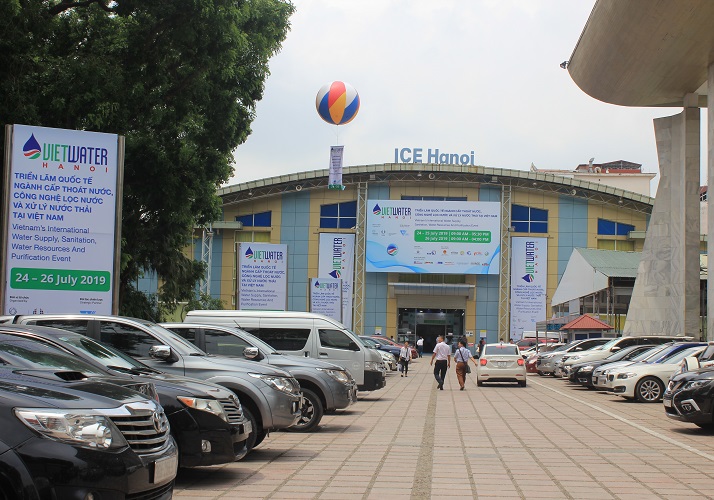


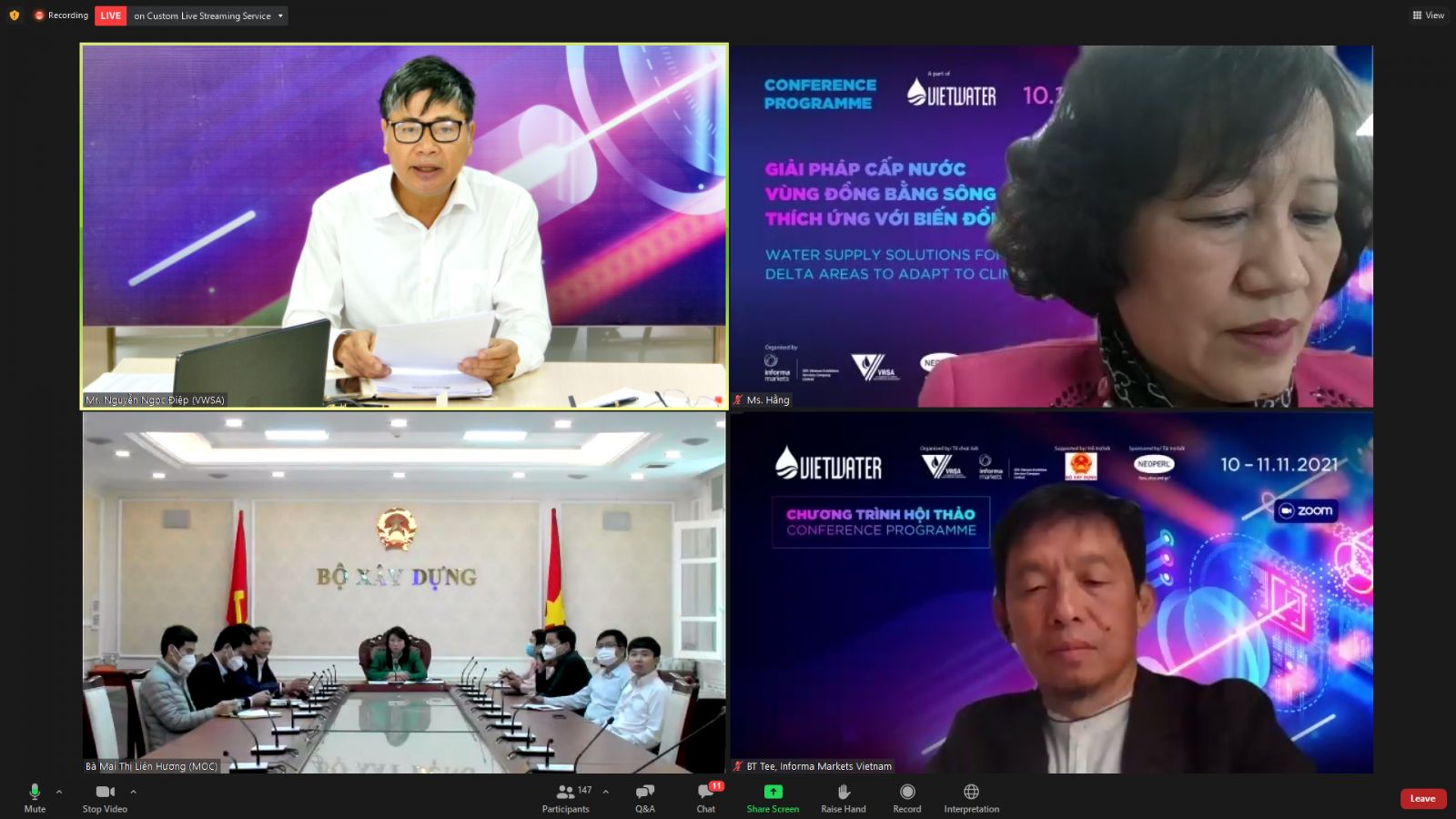
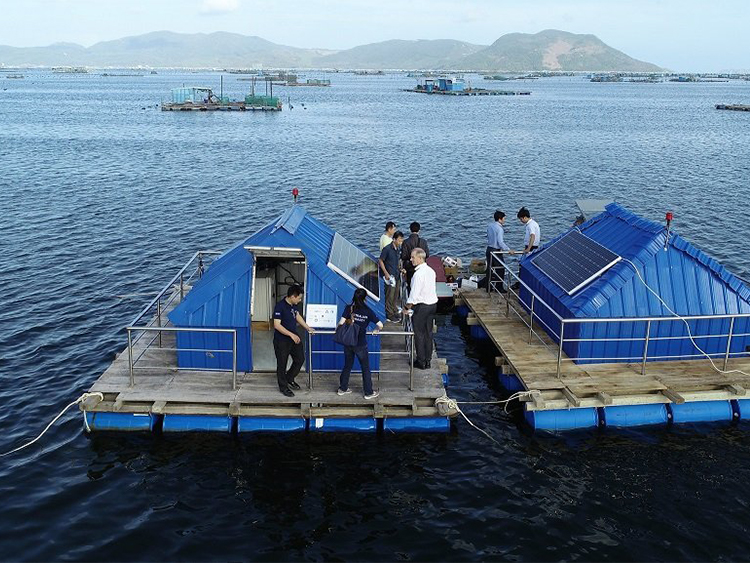

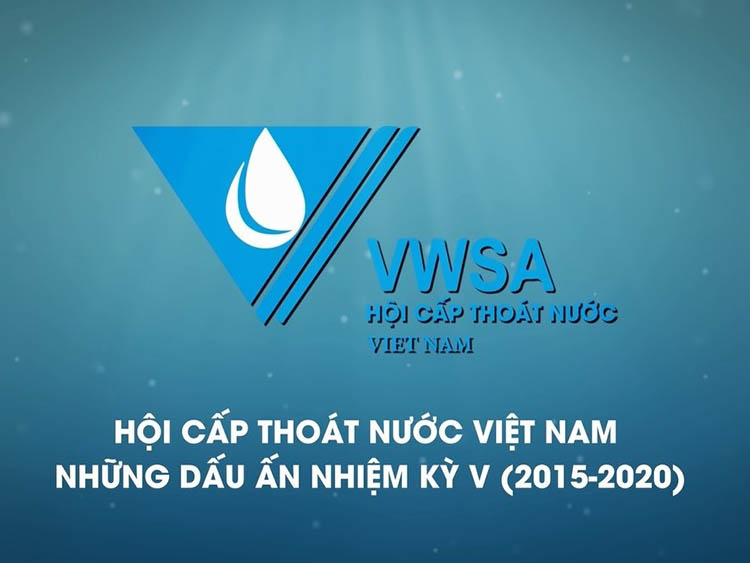
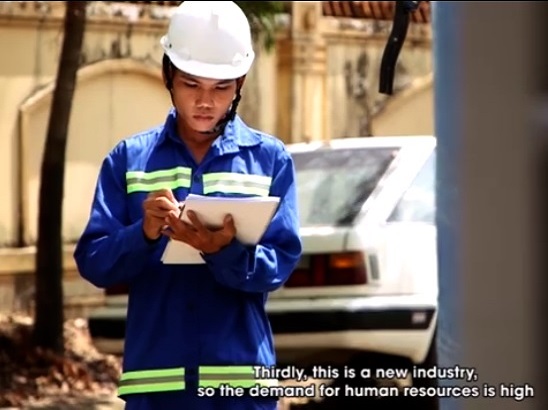
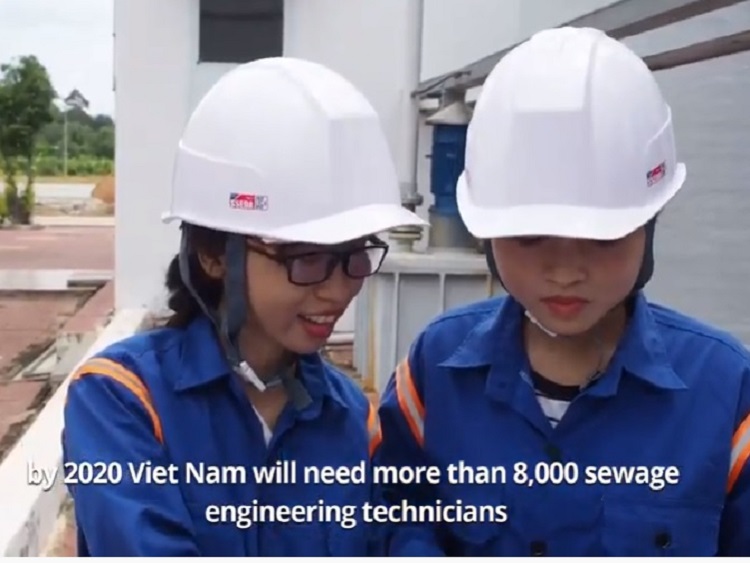

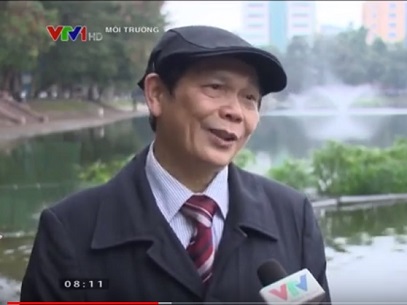
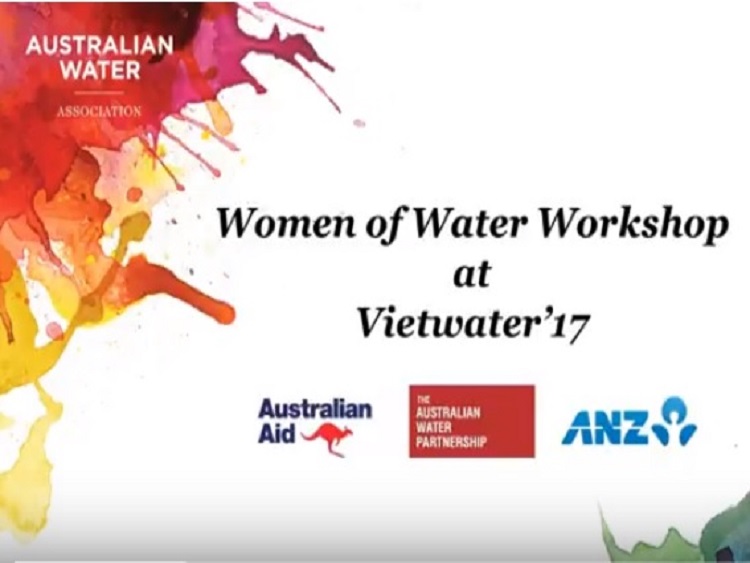
.jpg)
.jpg)
.JPG)
